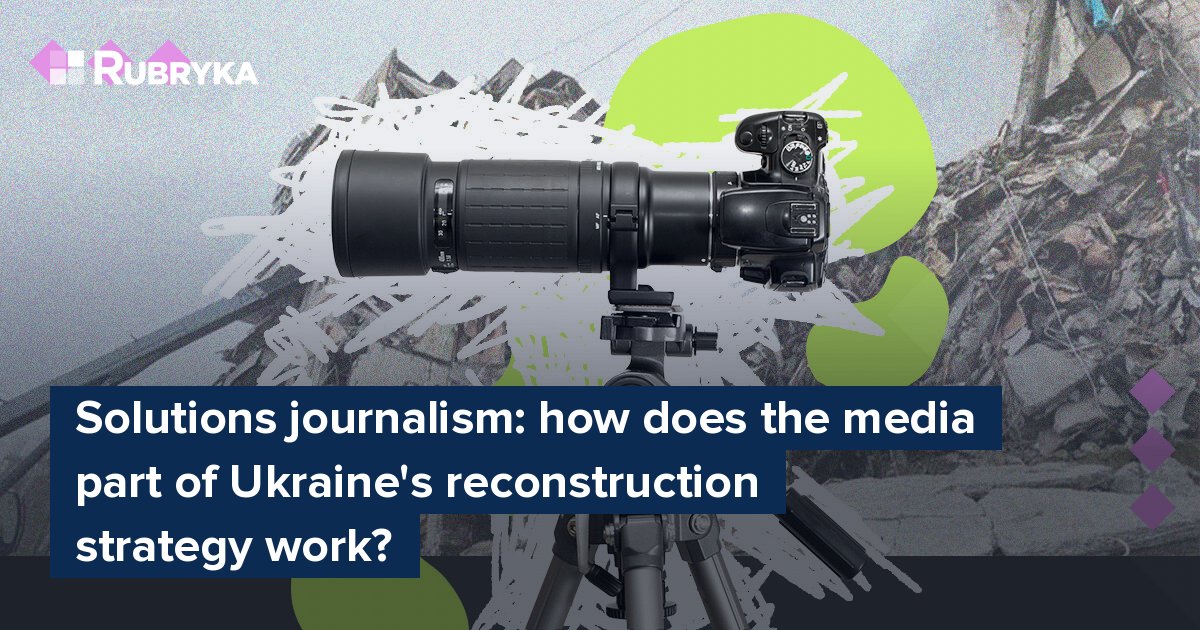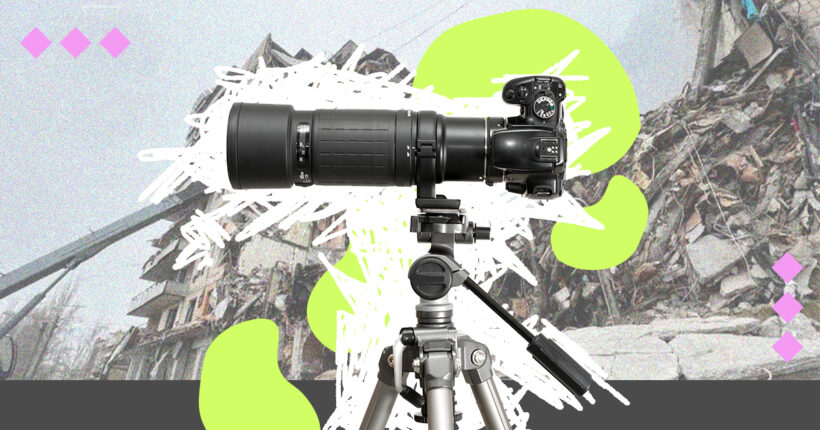
What is the problem?
The restoration of Ukraine is a complex process. Covering this process is also a difficult task. Rubryka investigates why.
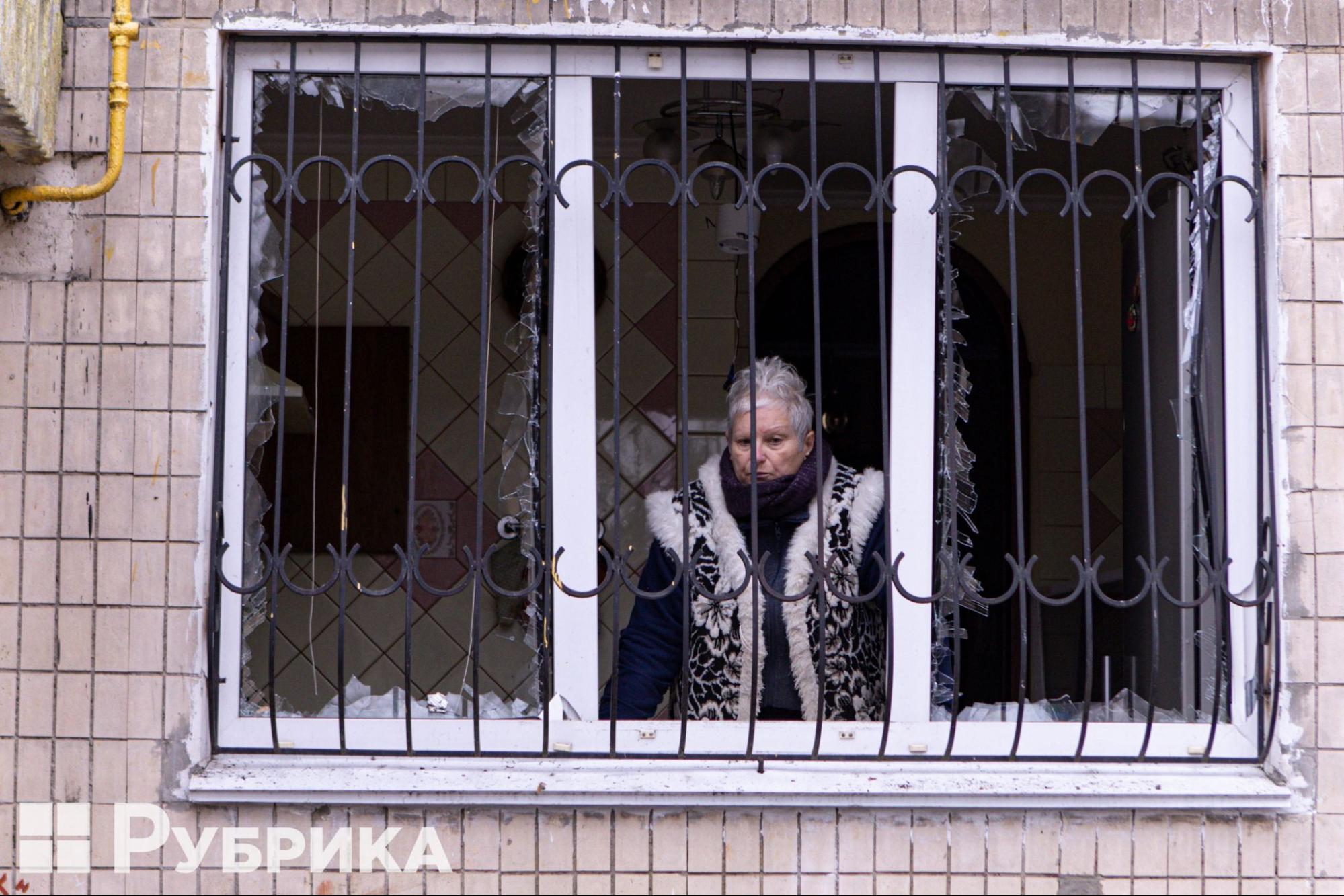
A resident of one of the houses damaged by Russian shelling of Kyiv on December 13, 2023/Photo by Mykola Tymchenko
- There are different projects and initiatives that have their own rules and restrictions that should be figured out. Funds for restoration are attracted and provided primarily by the state, but local self-government bodies, non-governmental organizations, international charitable funds, and other states can join.
- Media professionals who cover the processes of physical reconstruction need to delve into the topic of housing and communal services, acquire at least basic construction and legal expertise, have the ability to analyze estimates and work with state digital solutions in the field of reconstruction. This knowledge affects the depth of materials and the ability to detect violations and expose corruption. And there are risks of abuse because large funds are directed to reconstruction.
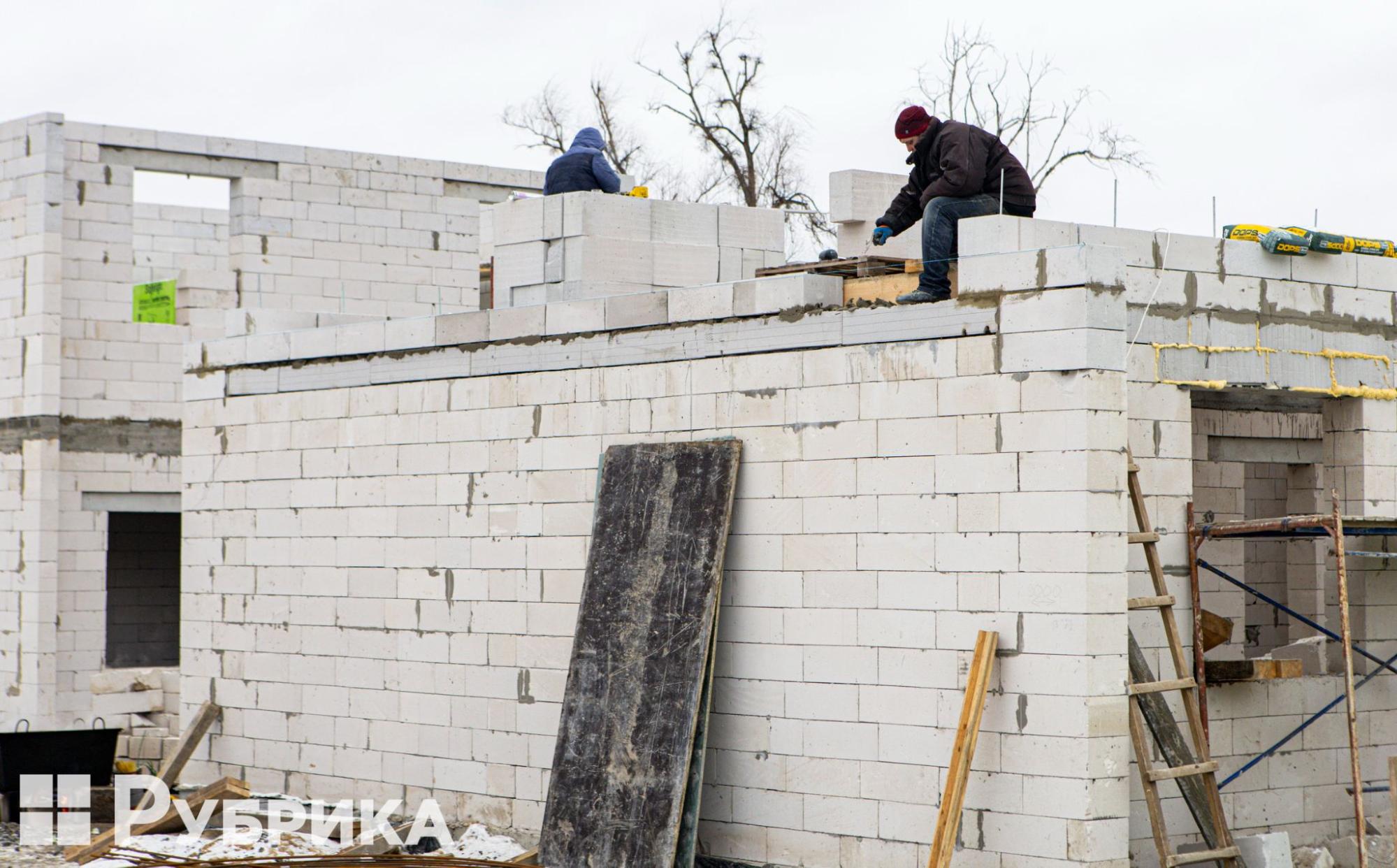
The reconstruction of the destroyed house on Bagirova Street in Irpin, the Kyiv region, is in progress/Photo by Mykola Tymchenko
- The skills of non-traumatic interviewing of people who suffered from Russian aggression, are under stress, and are often depressed are absolutely necessary.
- This topic is very sensitive because all victims want to receive fair compensation. However, journalists must maintain a balance to remain objective about the state's ability to help people and, at the same time, not neglect the victims' feelings.
What is the solution?

Screenshot from the site Ukraine Recovery Plan recovery.gov.ua. Five main principles of Ukraine's recovery are listed here: immediate start and gradual development; increasing fair welfare; integration into the EU; reconstruction better than it was, on a national and regional scale; stimulation of private investments
Solutions journalism is a direction that highlights social problems through disclosure and analysis of options for solving them based on specific examples from the experience of citizens, communities, and initiatives.
Solutions journalism allows the media to inform about events and be their observers, but not only. Thanks to this genre, the journalist becomes part of creating change. Today, when there is a lack of professional discussions on complex social topics in the information field, materials that offer practical solutions and are capable of having a tangible impact on the state are more valuable than ever before, says Oleksandra Panova, deputy operational director of Internews-Ukraine.
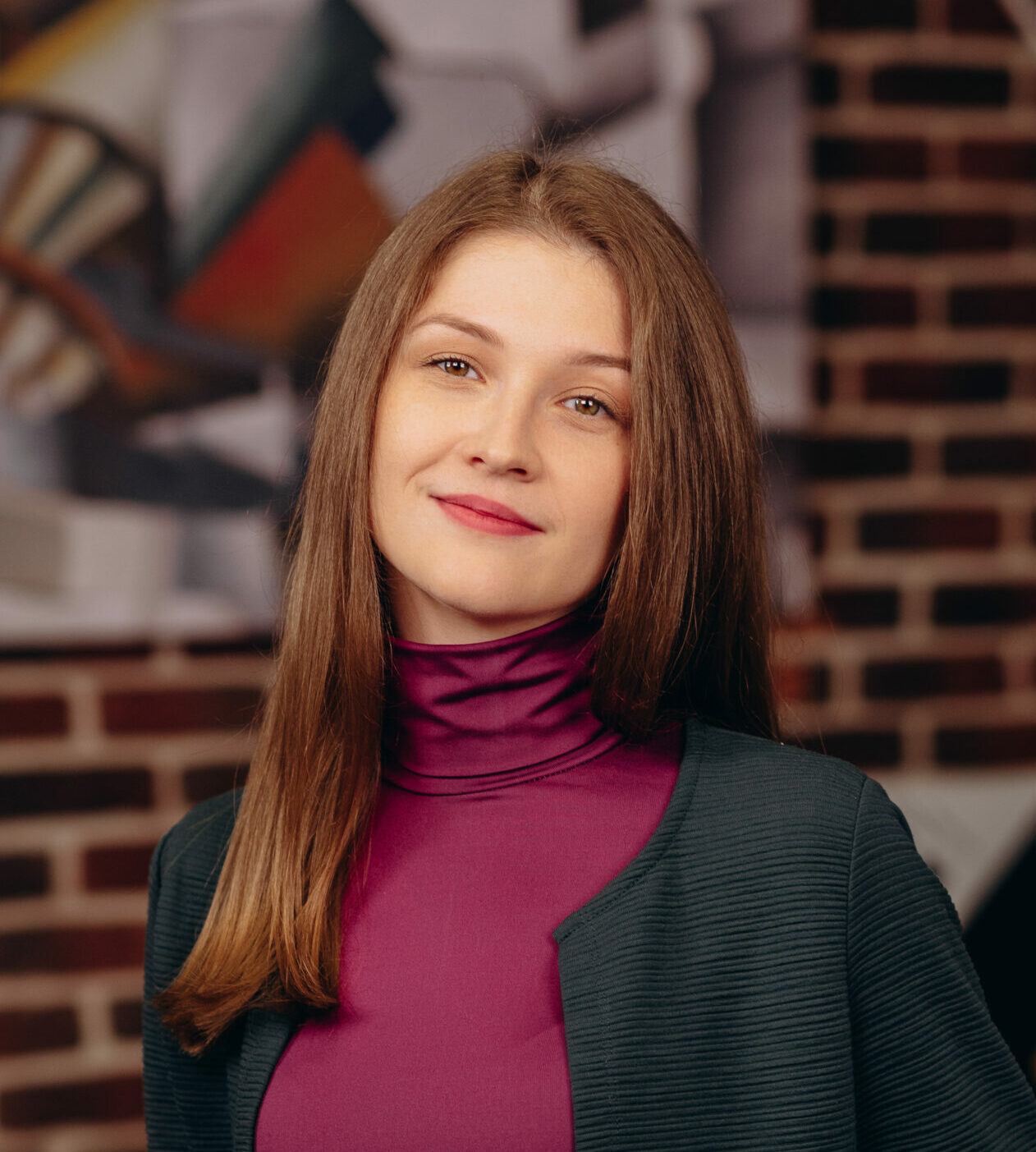
Oleksandra Panova, deputy director of operations of Internews-Ukraine NGO
Since 2020, Rubryka has been working in the format of solutions journalism, and during this time, the team has become convinced that not every case and story fits this concept.
Cases of reconstruction, in which the state, communities, or the residents of damaged buildings themselves are looking for certain patterns of solutions, fit well into the format of solutions journalism. The approaches of solutions journalism are helpful in coverage and can even be included in strategizing the topic of reconstruction of Ukraine, says Maryna Smahina, Rubryka's senior editor.
So, how can solutions journalism be involved in rebuilding strategizing? It can perform various functions within the framework of strategizing:
- explain to readers what recovery tools are and under what conditions they work,
- delve into specific cases of reconstruction and publicize them,
- rely more on the facts and the situation than on the emotions of its participants,
- reveal the limitations of certain solutions and thus become a bridge between the public and the government.
The authorities, for their part, can improve their reconstruction decisions by analyzing the pool of journalistic materials.
How does it work?
However, not everything that appears to be a solution at first glance is actually one. That is why the following four criteria should be followed for the creation of materials in the approach of solutions journalism:
- The material should focus on the mechanics of the solution — how it works, down to the smallest detail.
- The relevant solution must already be implemented or be in the implementation process — only plans and good intentions are not enough here. The solution must have certain results.
- The solutions journalism approach also requires highlighting the limitations and gaps of the approach.
- When highlighting the solution, we should also pay attention to the insights — what the people who implemented it learned in the implementation process. This knowledge, acquired through experience, can be used by those who decide to reproduce this solution.
"Solutions journalism materials may appear to be success stories or "how to" but it is not so. A true solution story should include the following components: a problem, an answer to that problem, evidence of effectiveness, and limitations. The proposed solutions should be such that other people can reproduce them. It's not important who did it, but it's important how," says Anastasia Rudenko, editor-in-chief of Rubryka.
The most important problem is obvious to everyone — it is Russia's aggression against Ukraine. Currently, the priority for Ukraine is defense against the enemy, and the lion's share of funding is directed to this.
"Since the beginning of the full-scale invasion, the Ministry of Community Development, Territories and Infrastructure has focused on providing a system for collecting and recording information about recovery needs and progress so that solutions were based on data, and the communities received the necessary support and funding, which would increase their resilience and capacity," commented Oleksandra Azarkhina, the deputy minister of Community Development, Territories and Infrastructure of Ukraine. Communities are a key driver of recovery. They determine their needs, plan recovery, and implement projects.
According to the deputy minister, solutions journalism is based on data analysis, expert assessments, and interactions with interested parties. This is a response to the modern demands of society when it is necessary not only to inform about events but also to find out the causes of problems and search for effective solutions.
Solutions journalism explains how recovery tools work
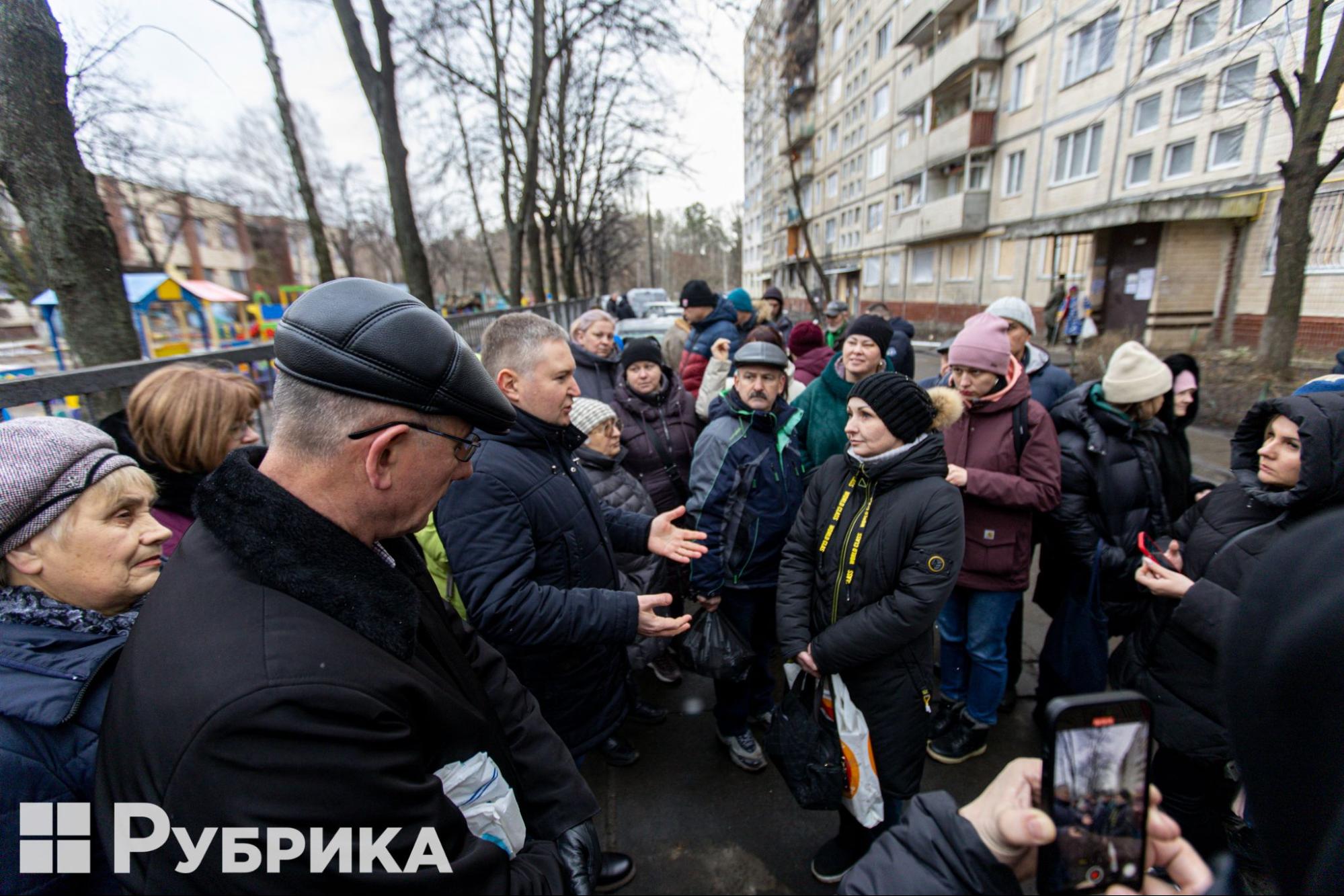
Communication of the residents of the affected building in the capital with city official Taras Kryvoruchko/Photo by Mykola Tymchenko
Recently, Rubryka, using the example of one of the affected houses in Kyiv, analyzed what should happen in case of damage and what difficulties the affected residents may have in submitting all the papers.
Creating an initiative group, asking for support from local officials, and carefully reading the damage documents compiled by the commission — this is just a short list of solutions implemented by residents of a building damaged by Russian ballistics, which can be helpful for many other victims.
In the same material, Rubryka showed, using the example of a specific building in Kyiv, how a technical inspection of buildings damaged as a result of military operations should take place and what problems may arise.
This is one of the complex cases, but much simpler ones also need the clarification that solutions journalism can provide. Tamara Burenko, an official of the Irpin City Council, cites examples of many citizens who turn to her for help in applying for financial aid from the state for the repair of housing damaged by hostilities via eRecovery program.

Tamara Burenko, an official of the Irpin City Council. Photo from Burenko's personal archive
Solutions journalism can also explain the limits of the competencies of certain bodies. The war exposed a long-standing problem with people's irresponsibility regarding documents for their property. After all, to receive compensation, you must confirm your property ownership. Solutions journalism can also reveal this algorithm through specific cases.
More facts than emotions
"There is no single recipe and no single source of funding for reconstruction. It is simply impossible to do everything from one funding source," Burenko emphasizes.
Unfortunately, the facts are that this year, the state has fewer financial opportunities for reconstruction. Recently, an interdepartmental working group recommended that ₴9.45 billion be allocated from the Fund for the Liquidation of the Consequences of Armed Aggression of the Russian Federation for more than 230 projects, the implementation of which was started in 2023. This huge amount of funds is needed only to cover last year's agreed projects, and the number of damaged objects is growing every day. Therefore, it is not worth counting on a quick rebuild and orienting the audience to it.
Burenko advises the media to ask specialists and get information from the direct performers of the work. For example, the heads of condominiums and management companies have information from which sources the restoration took place because different sources have different criteria for performing work and selecting objects for restoration.
The analysis of the available solutions can help Ukrainians better orient themselves in what and in which case can work for reconstruction. You can emotionally understand residents who, for example, did not make internal repairs in a damaged house, but at the same time, it is worth finding out and noting whether these works are included in a specific restoration program.
In addition, pay attention to inconsistencies in the statements and actions of officials and monitor whether the funds spent by the contractor on materials, for example, for a school shelter, correspond to the average market. All these are elements of different journalistic approaches, including investigative ones, but in fact, every journalist who works with solutions journalism is a bit of an investigator.
Solutions journalism delves into specific cases
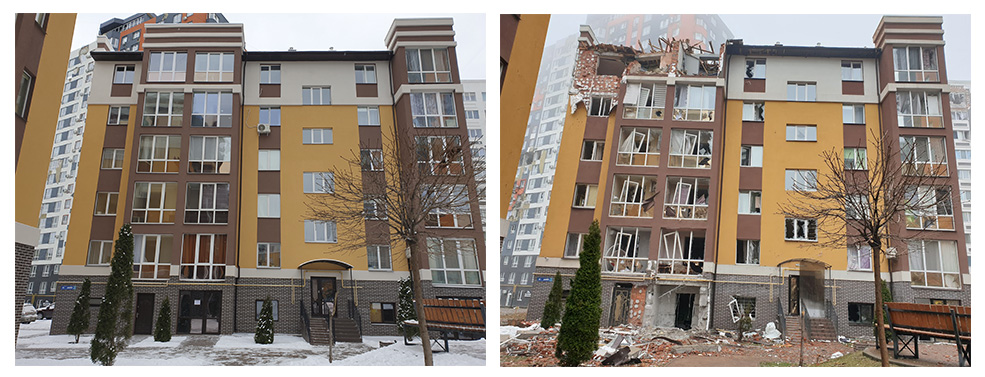
One of the houses in Irpin before and after restoration/Photo from the archive of the head of the Zatyshnyi 2020 condominium association Olena Lytvynenko
Last summer, Rubryka reported on one of the solutions for reconstruction using the example of two condominiums in Kyiv region's Irpin. The program VidnovyDIM was introduced by the Energy Efficiency Fund of Ukraine. It finances the restoration of residential buildings damaged as a result of the military aggression of the Russian Federation against Ukraine.
Four houses of the Zatyshnyi 2020 condominium and Novo-Oskolskyi in Irpin became the first successful participants of this program.
The article, in addition to what steps need to be taken to join VidnovyDIM, and how the people of Irpin did it, also discussed the program's limitations. This is one of the key elements of solutions journalism — explaining not only how a solution works, but also where it doesn't work and why. At that time, with the funds provided, restoring only general building objects, that is, the facade, roof, engineering systems, and windows, was possible. In addition, the program worked only in a few regions of Ukraine.
As of the beginning of 2024, the solution has been improved: now the VidnovyDIM program extends to the entire territory of Ukraine, except temporarily occupied territories and territories of active hostilities. Also, it allows for the refurbishment of common areas inside the building, and it is possible to apply for the program twice.
However, to directly repair each damaged apartment, some of which were completely burned down, residents can only use the state program eRecovery. Once again, we pay attention to limitations because the funds that the state can provide as compensation are often not enough for all the work if the housing burned down, notes Burenko.
This is also recognized at the state level. In particular, Olena Shulyak, head of the parliamentary committee on the organization of state power and local self-government, noted at the end of 2023: "The state cannot compensate all the amounts by checks, but to establish a certain fairness, an average price will be used, the same for all citizens, which participate in the compensation program for damaged housing."
Identifying such gaps in solutions allows you to fill them over time. For example, Shulyak noted that if initially the state compensated apartment owners up to ₴200,000 within the framework of e-Recovery, now a new stage of compensation is being implemented — up to ₴500,000 for apartment repairs.
***
In the media community, you can often hear that solutions journalism is not a practical tool for pressing issues. In a country at war, where the aggressor wreaks new destruction every day, and rebuilding must take place under the constant threat of further mutilation — how can solutions journalism be relevant to covering recovery and become a part of this process?
Skeptics do not see the main thing — solutions journalism is not about complimentary stories with a happy ending. It's a critical assessment of existing approaches to rebuilding, taking them down to the nuts and bolts, including those elements of solutions that don't work. The main thing is that all this is based on examples, with the living experience of people, with a deep immersion, first of all, in the problem, and then already in the way of its solution.
"Solutions journalism can work as a bridge between people and the state, between public initiatives and decision-making centers. On the one hand, we disassemble existing solutions so that more people can use them, already knowing about the possible pitfalls and peculiarities of implementation. On the other hand, we identify gaps in solutions and seek expert opinions on how to fix them. This can already be heard by those who make decisions and take into account in developing relevant initiatives," says Maryna Smahina, Rubryka's senior editor.
You can learn more about how to work with solutions journalism and put it into practice with the solutions journalism guide developed by Internews-Ukraine NGO.
This special project was implemented by the NGO Internews-Ukraine" with the support of the US Embassy in Ukraine. The authors' views do not necessarily coincide with the official position of the US government.


